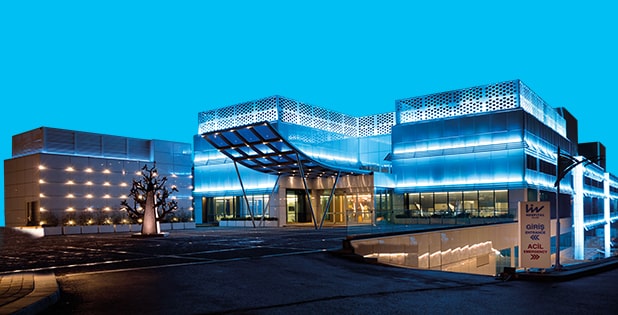About IVF Center
At No Wait Surgery, we expertly manage the Hospital Clinic Center, where parenthood dreams come true. We offer advanced reproductive health treatments with unwavering support, vast clinical expertise, and the latest protocols.
Our IVF Unit
Our specialized team collaborates closely with guests to tailor the best treatment options. Whether it’s ovulation induction, surgical intervention, intrauterine insemination, or IVF-ICSI, we provide comprehensive support and psychological assistance.
Understanding Infertility
Infertility is defined as no pregnancy after one year of unprotected and frequent intercourse. 85% conceive within one year, 93% within two. For the rest, assisted reproductive techniques are considered. Around 15-20% face infertility.
Causes of Infertility
Advanced female age and egg reserve greatly impact IVF success. Women above 38 experience a significant drop in egg quantity and quality. In women over 40, pregnancy rates plummet to 30%. Age 45 is generally the cutoff for pregnancy through treatments.
Customized Approaches
Some women may require surgery before IVF, while others need adjusted protocols or medication doses based on their ovarian reserve and age. Uterine or ovarian issues can be surgically corrected to optimize treatment outcomes.
Female-Related Causes:
- Blocked tubes, hydrosalpinx (tube inflammation)
- Ovulation disorders, PCOS
- Uterine or cervical problems
- Hormonal and metabolic issues
- Endometriosis and ovarian cysts
- Abdominal adhesions from previous surgeries
- Advanced age
- Vaginismus
Male-Related Causes:
- Male factor infertility in 30-40% of cases
- Semen analysis guides diagnosis
- Sperm count or motility issues
- Azoospermia (absence of sperm)
- Blockages in sperm carriers
- Erectile or ejaculation problems
- Hormonal or genetic causes
- Varicocele
No Wait Surgery ensures your journey to parenthood is handled seamlessly, from diagnosis to personalized care. Trust us to make your dreams a reality.
Treatment Options
Insemination (IUI)
Specially prepared sperm is placed directly into the uterus before egg release, typically using pills or injections. This is ideal for women under 38, with open tubes, a normal uterus, and men with sufficient sperm count and motility.
IVF (Classic Tube Baby)
Eggs are collected and fertilized with live sperm in a laboratory setting. This method requires a certain amount of viable sperm, though it’s becoming less common due to lower success rates compared to microinjection.
ICSI (Microinjection)
Sperm is injected into individual mature eggs, making it possible for men with low sperm counts to father children. This method often yields higher fertilization rates than traditional IVF.
TESE Operation
For cases of azoospermia (no sperm in semen analysis), procedures like TESE can be used to retrieve sperm. Microsurgical sperm searches under anesthesia have higher success rates, especially when microscopic evaluation is involved.
IVF Treatment Steps
- Evaluation of the infertile couple, including gynecological and urological examinations
- Selecting the most suitable treatment method
- Ovulation induction to stimulate egg development
- Egg collection under anesthesia (OPU procedure)
- Fertilization of eggs with sperm (ICSI)
- Embryo transfer
Advanced Techniques
Assisted Hatching
This process involves gently scratching the embryo’s surrounding membrane to improve its attachment to the uterine wall, potentially increasing implantation rates.
PGD (Preimplantation Genetic Diagnosis)
Embryos biopsied on the third or fifth day of development are screened for genetic abnormalities. This is valuable for couples with known genetic diseases or recurrent pregnancy loss.
Sperm Selection with IMSI and Double Fracture Method
In cases of severe male infertility, IMSI offers enhanced sperm evaluation by providing better image enlargement. This helps select higher-quality sperm.
Hysteroscopy and Laparoscopy
Hysteroscopy allows visual examination of the uterus to detect and address structural issues. Laparoscopy is useful for treating ovarian cysts, adhesions, fibroids, and evaluating the fallopian tubes.
Embryo Freezing, Storage, and Thaw
Embryos can be frozen and stored for later use, such as sibling attempts or in case of treatment failure. Modern freezing and thawing methods maintain embryo quality.
Preventing Ovarian Hyperstimulation Syndrome (OHSS)
For high-risk patients prone to OHSS, embryos are frozen and stored to reduce the risk to zero without compromising embryo quality.
At No Wait Surgery, we’re dedicated to ensuring your fertility journey is seamless and successful, from start to finish. Trust us to make your dreams of parenthood a reality.

Cosmetic Treatments
Planning some cosmetic work and want to discuss your options? Speak to Asthetica today.
Book A Discovery Call
Ready to take the next step to better health and want to discuss options?
Speak to No Wait Surgery today.



